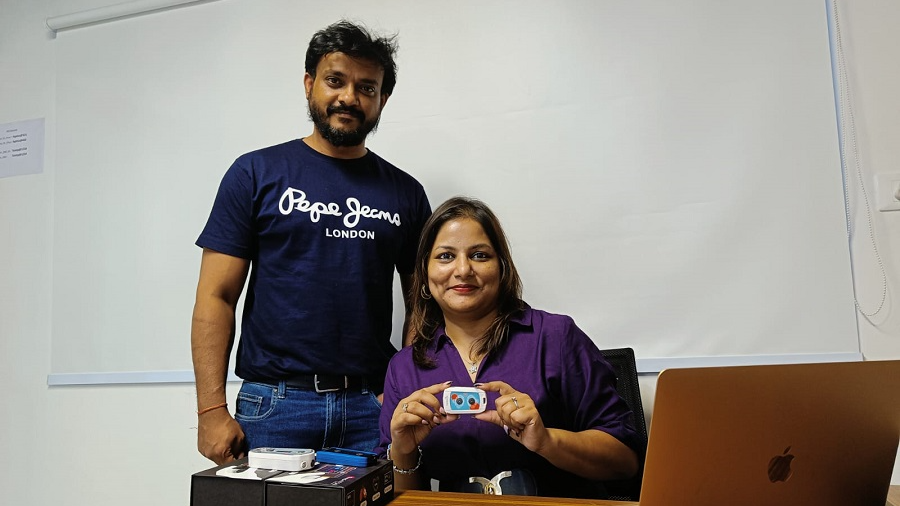
Neha, 41, and Rahul Rastogi, 42, both electronic engineers, were quite happy in their corporate jobs when an unexpected medical emergency struck the family. In 2013, Rahul’s father who was in his fifties at that time, and was seemingly fit, suffered a massive heart attack.
As he stabilised and recuperated at home, the couple felt the need for his continuous health monitoring. They bought a lot of home care devices such as a BP monitor, glucometer, oximeter, etc but could not find any device that could detect any heart abnormality. The only device that helped a doctor detect any irregularity with the heart functioning was an Electrocardiogram or an ECG machine. But even the most portable versions of these ECG devices were cumbersome as they required placing 10 leads in the different parts of the chest, and the limbs.
The only device that helped a doctor detect any irregularity with the heart functioning was an Electrocardiogram or an ECG machine
For the uninitiated, an electrocardiogram (ECG) has 10 electrodes to read electrical signals from 12 different parts of the chest and limbs. Each lead picks up electrical activity from a different position, allowing the doctor to see the heart from many angles. The reading tells a doctor if there are any irregular heartbeats, blocked arteries that are causing chest pain, or if the patient has had a previous heart attack, etc. It is perhaps the simplest non-invasive procedure to know a person’s heart health.
So, the engineer couple took up the challenge to make a leadless, portable ECG device themselves. Rahul, who once wanted to become a doctor, started reading about how ECG works, what all parts of the body one needs to attach the sensors to and why? The next challenge was to make the device handy and without any leads. The first prototype they designed was a palm-size device which had two sensors on the front. The user needed to place two thumbs on the sensors. “It worked. The only limitation,” says Neha, “was that the device could give a one-lead reading. We met a lot of cardiologists while working on the device. They told us that in order to get a reliable reading, we need a 12-lead reading.”
So, in the next device, the couple designed a similar sensor on the side of the device. The first reading is now taken by placing both thumbs on the sensors in the front; thereafter, the user keeps one thumb on the sensor and puts the side sensor on the specific spots on the body mentioned in the ECG manual. This portable, wireless device records the 12 readings linearly rather than recording them at one go as in the case of a conventional ECG machine with 12 leads attached to it.
Doctors find the device pretty handy and accurate, and particularly useful when they go out for camps in remote and rural parts of the country. We believe the device will revolutionize heart care in rural and remote areas
The data captured by the device is automatically saved on the app synched with the device. Your doctor may also access the data through another app specially designed for the doctor. “We named it Sanket Life because heartbeats represent life and any irregularity in the heartbeats could be a threat to a person’s life,” says Neha, while showing various improvised versions of the device at her desk.
The device, the duo says, has received accolades from both the research and clinical fraternity. The pilots have been done at major hospitals, including Apollo hospitals. “Doctors find the device pretty handy and accurate, and particularly useful when they go out for camps in remote and rural parts of the country. We believe the device will revolutionize heart care in rural and remote areas,” says Rahul.
So far the company has sold over 50,000 devices. “We are continuously improving the device, making it more effective. We are also working on some other portable devices to make healthcare easily accessible to those who don’t find time to visit a hospital,” says Rahul